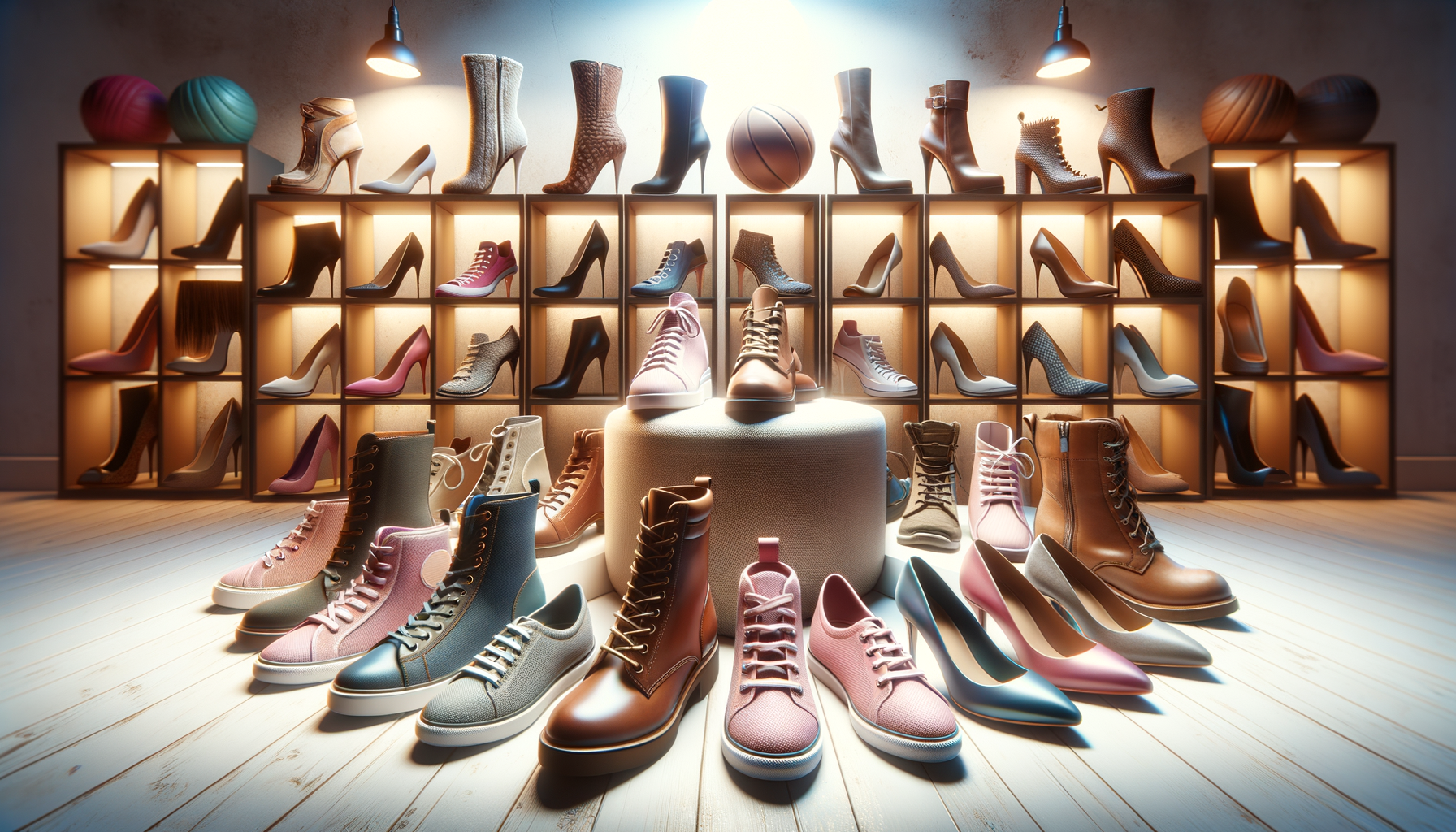Understanding Different Types of Women’s Shoes
Women’s shoes come in a myriad of styles, each designed to cater to specific needs and occasions. The diversity in shoe types offers women the flexibility to choose according to their preferences and the demands of their lifestyle. From casual sneakers to elegant stilettos, the choices are abundant.
Casual shoes like sneakers and flats are popular for their comfort and versatility. Sneakers, often made from breathable materials such as mesh or canvas, are perfect for everyday wear and light physical activities. Flats, on the other hand, offer a chic look without compromising comfort, making them ideal for work or casual outings.
For more formal occasions, women often turn to heels. High heels, including stilettos and pumps, are crafted to add elegance and height. While they can be stunning, it’s crucial to consider the heel height and design to ensure comfort, especially for prolonged wear. Mid-heels and kitten heels provide a balance between style and comfort, suitable for events that require a touch of sophistication without the strain of high heels.
Boots are another essential category, ranging from ankle boots to knee-highs. They are particularly favored in colder climates for their warmth and style. Materials like leather and suede are common, offering durability and a timeless appeal.
Lastly, sandals and wedges are perfect for warmer weather. Sandals provide breathability and are often chosen for their ease of wear. Wedges, with their sturdy sole, offer the height of heels with added stability, making them a practical yet stylish choice.
Materials and Construction: What to Look For
The materials and construction of women’s shoes significantly impact their durability, comfort, and style. Understanding these aspects can help in making informed purchasing decisions.
Leather is a favored material for its durability and classic look. It molds to the foot over time, providing a custom fit and increased comfort. Suede, a type of leather with a soft finish, offers a luxurious feel but requires more care to maintain its appearance.
For those seeking cruelty-free options, synthetic materials and vegan leather are excellent alternatives. These materials have improved significantly over the years, offering similar aesthetics and durability to traditional leather.
Textile materials, such as canvas and mesh, are commonly used in casual shoes and sneakers. They offer breathability and flexibility, making them suitable for active wear. However, they might not provide the same level of protection against the elements as leather or synthetic materials.
The construction of the shoe, particularly the sole and insole, plays a crucial role in comfort. A cushioned insole can provide support and reduce foot fatigue, while a well-constructed sole ensures stability and traction. Pay attention to the stitching and glue work, as these are indicators of the shoe’s quality and longevity.
When shopping for shoes, consider the intended use and the environment in which they will be worn. This will guide you in choosing the right materials and construction features that align with your needs.
Choosing the Right Fit: Tips for Comfort
Finding the right fit is paramount when shopping for women’s shoes. A well-fitting shoe not only enhances comfort but also prevents potential foot problems.
Start by measuring your feet regularly, as foot size can change over time due to factors like weight fluctuations and aging. Measure both feet, as one foot may be slightly larger than the other, and always fit shoes to the larger foot.
When trying on shoes, wear the type of socks or hosiery you plan to wear with them. This ensures a more accurate fit. Walk around in the shoes to assess comfort, paying attention to any areas that feel tight or cause discomfort.
Consider the width of the shoe as well as the length. Many brands offer a range of widths, from narrow to wide, to accommodate different foot shapes. A shoe that is too narrow can cause blisters and discomfort, while one that is too wide may lead to instability.
It’s also important to consider the arch support. Shoes with proper arch support can prevent issues like plantar fasciitis and provide overall foot comfort. If the shoe lacks adequate support, consider using orthotic inserts.
Finally, shop for shoes later in the day when your feet are at their largest. This helps in finding a fit that will remain comfortable throughout the day, even as your feet swell slightly from activity.
Fashion Trends and Timeless Classics
Fashion trends in women’s shoes are ever-evolving, yet some styles remain timeless, offering a blend of modern flair and classic elegance.
In recent years, sustainability has become a major trend in the footwear industry. Many brands are focusing on eco-friendly materials and ethical manufacturing processes. Shoes made from recycled materials or sustainable sources are gaining popularity among environmentally conscious consumers.
Chunky sneakers and platform shoes have made a comeback, offering both comfort and a bold fashion statement. These styles are versatile, pairing well with casual and athleisure outfits.
On the other hand, classic styles like ballet flats and loafers continue to be wardrobe staples. Their simplicity and elegance make them suitable for various occasions, from casual outings to professional settings.
In the realm of heels, block heels and mules are currently in vogue. Their design offers comfort without sacrificing style, making them a practical choice for those who want to add height without the discomfort of traditional stilettos.
Color trends also play a significant role in shoe fashion. While neutrals like black, brown, and beige remain popular, bold colors and patterns are increasingly being embraced. Animal prints, metallics, and vibrant hues can add a pop of personality to any outfit.
Ultimately, while trends offer inspiration, personal style and comfort should guide your choices. A well-curated shoe collection balances trendy pieces with timeless classics, ensuring versatility and longevity.
Caring for Your Shoes: Maintenance Tips
Proper care and maintenance can extend the life of your shoes, keeping them looking new and ensuring they provide comfort for years to come.
Start by cleaning your shoes regularly. For leather shoes, use a damp cloth to wipe away dirt and apply a leather conditioner to keep the material supple. Suede shoes require a special brush to remove dirt and maintain the texture. Avoid water exposure, as it can damage suede.
For fabric shoes, spot cleaning with a mild detergent and water is usually sufficient. Allow them to air dry away from direct heat, which can warp the material.
Rotate your shoes to prevent excessive wear on any single pair. Giving shoes a day or two to rest between wears allows them to air out and maintain their shape.
Invest in quality shoe storage solutions. Use shoe trees to help maintain the shape of leather shoes and store them in a cool, dry place. For boots, consider boot shapers to prevent creasing.
Waterproofing sprays can be useful for protecting shoes from moisture and stains. Apply them to new shoes and reapply periodically to maintain effectiveness.
Finally, address any repairs promptly. Worn heels, loose stitching, or damaged soles should be repaired by a professional to prevent further damage and prolong the life of your shoes.
By incorporating these maintenance practices, you can ensure your shoes remain in excellent condition, providing both style and comfort for the long term.




Leave a Reply